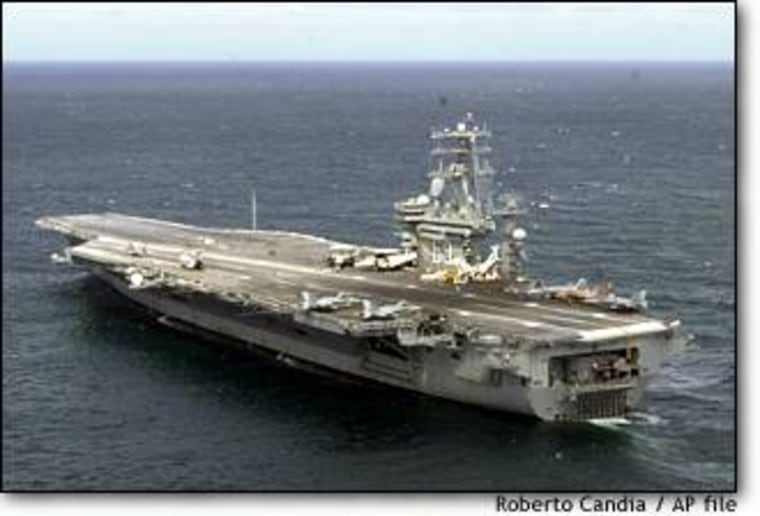“When word of a crisis breaks out in Washington, it’s no accident that the first question that comes to everyone’s lips is: ‘Where’s the nearest carrier?’” said U.S. President Bill Clinton a few years back. That has not changed since, and Nimitz-class aircraft carriers and their older conventionally powered sister ships continue to have a starring role in the U.S. war script.
It is not just a show of strength. If a war does break out, the US Navy’s Nimitz class multi-purpose aircraft carriers are the biggest in the world - huge floating airports which can carry as many as 85 fighter planes on board, and the capability to launch four planes every minute from their massive decks. And the United States Navy owns eight of them, with two more under construction. These nuclear powered ships, each of whom costs $4.5 billion, are the core of the US’s conventional military might abroad.
The USS Theodore Roosevelt was one of the key elements of NATO’s naval power in the 1999 Kosovo conflict with more than 3,400 combat missions launched from its deck. Other Nimitz class carriers, including the first one, USS Nimitz (deployed in 1975) have served the wars in Afghanistan and previous conflicts in Iraq.
According to Bruce Unger, professor of Political Science at Randolph-Macon College, Virginia, and a defense expert, the aircraft carriers will once serve as the forward presence in the event of a war with Iraq.
During operations, Nimitz-class carriers sail at the center of a carrier battle group of ships that includes guided missile cruisers, destroyers, frigates, logistics ships and submarines. The carriers alone have a combined ship and aircrew of more than 5,000 servicemen and women.
Four elevators bring aircraft to the flight deck and fighters are launched by steam catapults known as “fat cats.” These accelerate aircraft to 150 miles per hour in less than three seconds.
Though their size (weighing nearly 100, 000 tons and stretching almost 1100 feet) may make the carriers appear vulnerable to attack, Dr Unger believes, like in the Gulf War a decade ago, it seems unlikely that Iraq currently has the capability to target these ships. In addition, the carriers also have on board 20mm Phalanx CIWS mounts, which provide the carriers with a “last-chance” defense against anti-ship missiles and littoral warfare threats that have penetrated other fleet defenses.
But the USS George H. W. Bush, which will be ready in 2009, will be the last of the Nimitz class carriers to be built, as the Navy begins development of CVNX, a new class of aircraft carriers. The CVNX will have a new nuclear power plant, improved electrical generation, a smaller, stealthier superstructure and a new system for launching and recovering aircraft.
